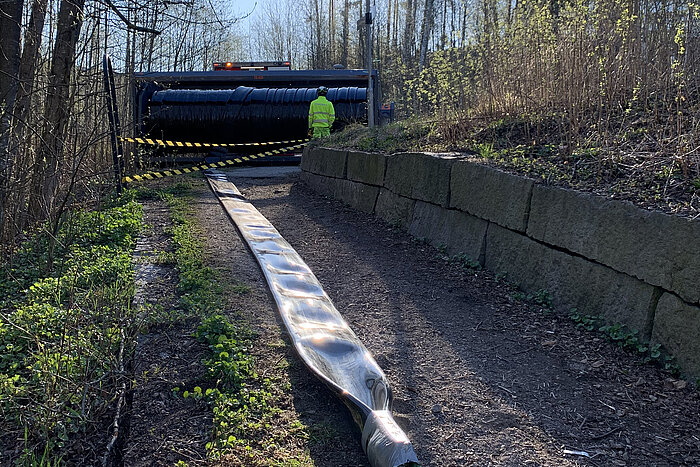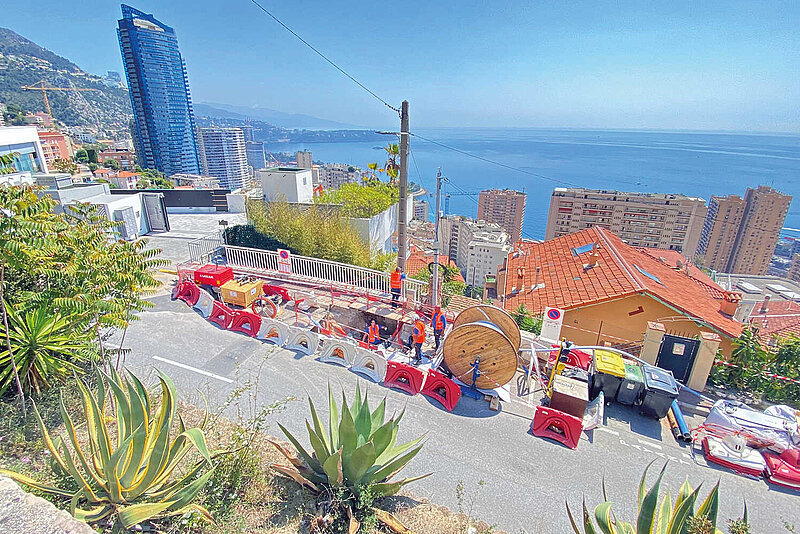In the area around Oslo Fossumbekken, a large-profile sewer pipeline DN 900/DN 1000 had to be renovated. For the renovation period from May to December 2020, the client – the municipality of Oslo – and the contracted company – Kjeldaas AS – looked for an efficient and safe bypass solution.
Apart from a conventional solution with PE pipes, the use of the innovative Primus Line® Overland Piping system was considered during the planning phase. The easy and quick installation technique as well as the reusability for other bypass projects finally convinced the end customer. Since the bypass also ran through a difficult-to-access and environmentally sensitive area, the high product safety of the aramid-reinforced liner was decisive in order not to endanger the sensitive ecosystem.
Laying the bypass
The bypass had to manage up to 300 litres of sewage per second. For this purpose, the rehabilitation experts of Kjeldaas AS installed two parallel pipelines of 1,050 metres each with Primus Line® Overland Piping. Both medium pressure liners DN 300 were operated with a pressure of 1.5 bar and only during the actual construction work from Mondays through Fridays. On days without construction work or in case of heavy rainfalls, the existing line was used. This approach enabled an optimal, fast and safe implementation of the project from both an economic and an ecological point of view.
The liner was laid out directly from the reel into the terrain. After a rope connection was established between the winch and the location of the reel, the flexible liner was pulled over the site. During this process, the liner was merely protected against damages by natural obstacles such as trees. The goal is a quick installation that is gentle to both, material and nature. Changes of direction in the course of the bypass can be fixed by posts.
After laying out the liner, the pull-proof connectors were installed. This enabled the connection of the bypass to the existing lines and/or pumps. The Overland Piping connectors are based on the well-known and proven Primus Line® connector technology which can be set quickly in the field with hand-held tools. After connecting the bypass, it is ready for immediate use.
Bypass dismantling and reuse
Bypass dismantling takes place in reverse order of installation. After having rinsed the liner with water as well as cleaned and emptied it by means of e. g. a foam ball, the Primus Line® connectors can be cut from the liner. The connector components (connector core and external sleeve) can later be separated with the aid of a mechanical press and can then be reused for future projects.
The liner is pulled out of the inaccessible terrain by means of a winch and recoiled onto the reel using the electrical drive of the transport unit. In areas with better accessibility, moveable units (e.g. mounted on a bobcat) can also be used to recoil the liner.
After having rolled up the liner on the reel again, the bypass material can easily be stored until the next project and is immediately available for further use.



